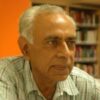Climate Change — Humans and Other Living Creatures
TRANSCEND MEMBERS, 3 Jul 2023
Dr. Ravi P. Bhatia – TRANSCEND Media Service
Our scientists have developed a name SAPIENS for living entities — animals, fish, birds, small creatures like mosquitoes, flies, rodents etc. In this definition, human beings are known as Homo Sapiens.
Homo is a Latin word meaning man or human, and SAPIENS means wise or clever or astute. Thus, Homo sapiens means wise human beings that have evolved over a time period of about two million years from their primitive form. It is generally believed that the earliest humans were found in Africa from where they moved to other regions — Asia, Europe, America (North and South). Some moved to colder regions of Arctic or Antarctica and also lived near cold mountains and glaciers.
Studies on glaciers have indicated that the world is likely to lose half of its glaciers by the year 2100 due to climate change. As a result of the melting of glaciers, the water levels in seas and oceans will rise by an amount that will threaten water supply to more than a billion people worldwide and also cause increased frequency of flooding. The US, Canada and Europe will not have any glaciers left since they would have melted by increased temperatures. This would adversely affect the rivers and lakes in these countries.
The earliest form of humans evolved from the four legged creatures (animals). Human beings are also referred to as Homo Erectus indicating that humans could stand and walk properly on their two legs — the other two limbs developed into what we call arms that have different functions Thus a human being had two legs and two arms unlike animals that had four limbs or legs used mainly for walking or running or for climbing a tree or jumping.
In contrast to sapiens (animals or humans), plants or trees require seeding — from seeds they develop into plants or trees. The seeds may be planted by humans or they may fall from other trees and germinate into large trees — sometimes much bigger than the original tree from which the seeds have fallen. Agriculture is based on creating proper soil and then sowing seeds of different types to grow different varieties of vegetables, or wheat or rice depending on whether the farmer is utilising the weather of sun or rain
As indicated above, living entities can be in the form of large animals , birds or fish (crocodiles or alligators) or they may be tiny creatures — mosquitoes or flies. Other forms may be squirrels that can easily climb over tall trees or high walls or natural structures. We also have birds of various colours, sizes and shapes that can sing melodious sounds (called birdsongs) or produce shrieks that can sound harsh or bitter.
Small creatures— mosquitoes or flies can generally bite individuals and people try to avoid them by wearing suitable clothes — socks or caps etc; sometimes electrical gadgets are switched on to drive away these pests. Otherwise, the bites of these creatures can cause pain due to the scratches and rashes and even lead to illness.
Looking at the vast variety of creatures — animals, birds, squirrels, mosquitoes, one thinks of the relationship of human beings with these creatures. One observes with pleasure at the status of human beings vis-a-vis these creatures ; humans occupy hierarchically the top position. One would also presume that humans behave properly so that humans beings, the environment and these creatures live together in harmony and peace.
Unfortunately, several sections of humanity in the world lead selfish, violent lives causing irreparable harm not only to each other but also to the environment and the vast numbers of creatures living close by. The environment suffers by the slow but steady increase in the world temperatures and large flooding and cyclones taking place.
The lesson is that human beings should lead unselfish and holistic lives so that they, the animals, birds, rodents and other creatures live harmoniously together. Let us hope that this lesson is not lost for the benefit of the humanity and the environment itself.
______________________________________________
 Dr Ravi P Bhatia is a member of the TRANSCEND Network for Peace Development Environment, an educationist, Gandhian scholar and peace researcher. Retired professor, Delhi University. His new book, A Garland of Ideas—Gandhian, Religious, Educational, Environmental was published recently in Delhi. ravipbhatia@gmail.com
Dr Ravi P Bhatia is a member of the TRANSCEND Network for Peace Development Environment, an educationist, Gandhian scholar and peace researcher. Retired professor, Delhi University. His new book, A Garland of Ideas—Gandhian, Religious, Educational, Environmental was published recently in Delhi. ravipbhatia@gmail.com
Tags: Evolution, Life, Theory of Evolution
This article originally appeared on Transcend Media Service (TMS) on 3 Jul 2023.
Anticopyright: Editorials and articles originated on TMS may be freely reprinted, disseminated, translated and used as background material, provided an acknowledgement and link to the source, TMS: Climate Change — Humans and Other Living Creatures, is included. Thank you.
If you enjoyed this article, please donate to TMS to join the growing list of TMS Supporters.

This work is licensed under a CC BY-NC 4.0 License.